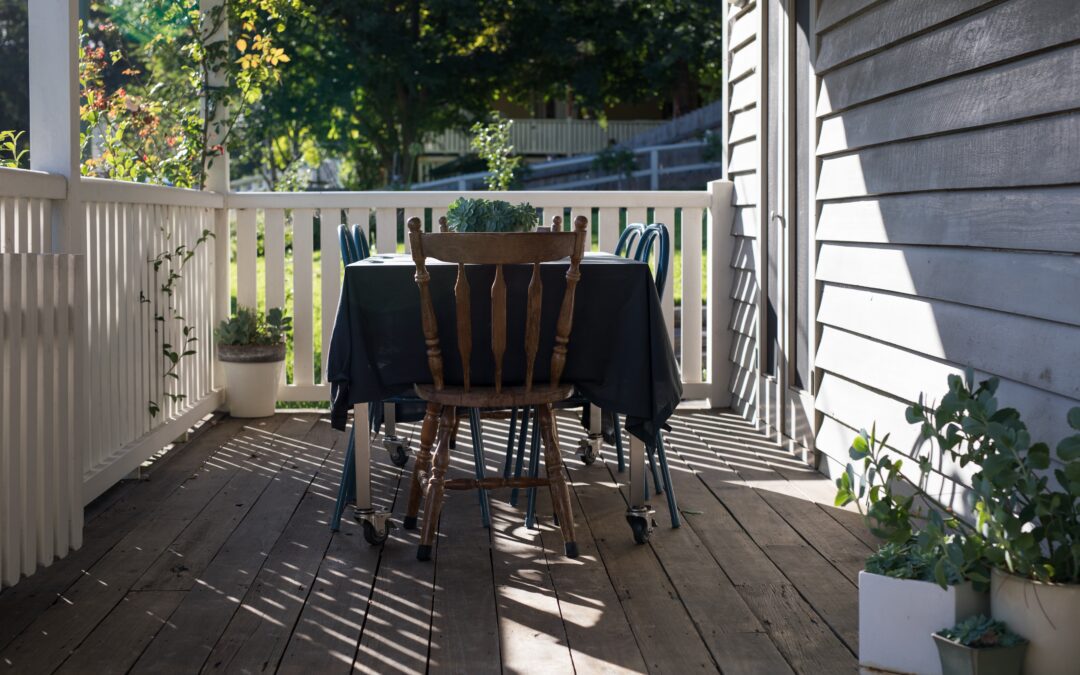A deck can last many years if it is properly built and maintained, but nothing lasts forever. Even if a deck looks fine from a distance, there may be signs that it is reaching the end of its life. Replacing an old deck is not always about appearance. Sometimes, safety and structure are at risk.
If you are wondering whether your deck still has life left in it or if it is time for a full replacement, this guide will help. Here are the signs homeowners in the Lower Mainland should watch for and what steps to take if your deck is no longer holding up.
Widespread Surface Damage
It is common for a few deck boards to crack or wear down over time. But if damage covers a large portion of the surface, it is more than a cosmetic issue.
Look for these signs
- Multiple cracked or split boards
- Large areas that are discolored or warped
- Spots that feel soft or springy when walked on
- Nails or screws popping up across the deck
This kind of damage often means the protective finish has worn off and moisture has made its way deep into the wood. At this point, replacing just a few boards is not enough to fix the problem.
Structural Rot or Decay
The frame of your deck supports everything above. When those beams and joists start to rot, the deck becomes unstable.
Signs of rot include
- Wood that crumbles or flakes when touched
- Visible mold or mildew under the deck
- Posts that lean or shift
- Framing that pulls away from the home
Rot usually starts where moisture collects. In the Lower Mainland, where rain is frequent, unprotected wood can deteriorate quickly. If rot is affecting the support system, the safest option is a complete rebuild.
Loose or Unstable Railings
Railings keep people safe. If they are no longer strong or secure, it is a major concern.
Things to look for
- Railings that move when you press on them
- Posts that wobble or lean
- Rusted or missing connectors
- Gaps or loose sections in the railing system
Loose railings are often a symptom of a failing deck frame. Fixing the railing without addressing the structure only provides a temporary solution.
An Old or Outdated Ledger Board
The ledger board connects the deck to your house. If it is not installed correctly or has become damaged, the entire deck could collapse.
Check for
- Visible gaps between the deck and house
- Signs of water damage around the attachment point
- Sagging or uneven connections
- Rusty bolts or missing fasteners
An old ledger board may not meet today’s standards. A rebuild ensures a secure and code-compliant connection that protects your home and your safety.
General Age of the Deck
Most wood decks have a lifespan of fifteen to twenty years. After that, even if the deck seems okay, the materials and structure are likely weakening.
If your deck is approaching or past this age, schedule a professional inspection. Materials may look fine on the surface but could be deteriorating underneath. Rebuilding allows you to bring the entire structure up to current safety standards and extend the use of your outdoor space.
Ongoing Repairs That Do Not Last
Some decks become a maintenance headache. Boards loosen. Stairs creak. Nails back out over and over. If you are constantly fixing new problems, it may be more efficient and cost-effective to start over.
Frequent small repairs can be more expensive in the long run than a new build. A fresh structure also gives you a chance to upgrade materials and layout at the same time.
It No Longer Fits Your Needs
Even if the structure is sound, your deck might no longer match how you use your space. Maybe your family has grown. Maybe you want more privacy or better flow to the yard. A replacement deck gives you the opportunity to design something that fits how you live now.
This could include
- Expanding the size to allow for dining or entertaining
- Adding built-in seating or storage
- Including covered areas or pergolas
- Replacing stairs or changing the shape of the layout
A new deck is not just about function. It is also about enjoyment. If your current space is limiting how you use your yard, it may be time for a change.
Preparing for a Sale
If you are planning to sell your home, the condition of the deck matters. A well-built deck increases curb appeal and adds value. A worn or aging one can turn off potential buyers or become a red flag during inspection.
Rebuilding the deck before listing your home ensures it shows well and meets buyer expectations. It also reduces the chance of delays or price negotiations caused by needed repairs.
When Repair Still Makes Sense
Not every old deck needs to be replaced. If the structure is solid and damage is limited to a few boards or surface finishes, repairs may be all that is needed.
Repairs can include
- Replacing surface boards
- Adding new railing sections
- Reinforcing stairs or supports
- Cleaning and resealing
An honest inspection from an experienced builder will help you decide. At All Hands on Deck, we always look at what makes the most sense for your budget and long-term plans.
What Happens During a Replacement
Replacing a deck does not have to be overwhelming. Here is what the process looks like when you work with a professional team
- We inspect the current deck to assess condition and safety
- We discuss your goals and recommend a new layout and materials
- We provide a clear quote with no surprises
- We handle permits if required by your municipality
- We remove the old deck and dispose of materials properly
- We build the new deck using methods and materials suited to your home
Every project is different. That is why we take time to plan before we build. The result is a deck that is solid, attractive, and built for years of use.
If your deck is starting to show its age or feels unsafe, it might be time for something new. Contact All Hands on Deck for a professional assessment and quote. We will help you make the right call for your home.



Recent Comments